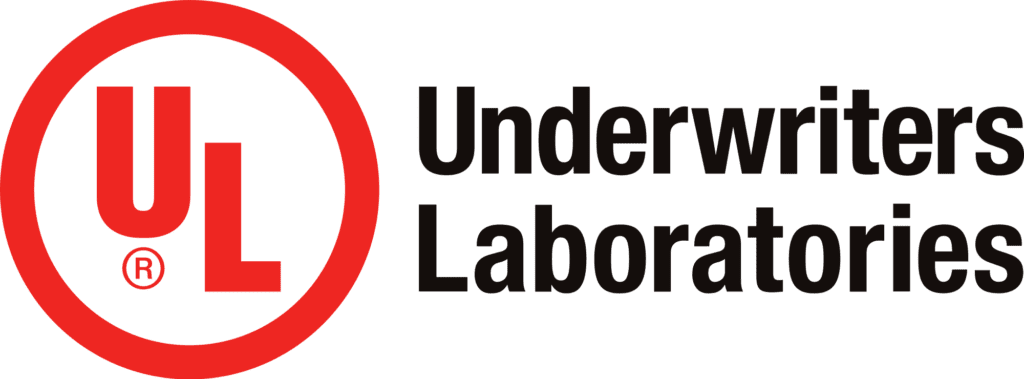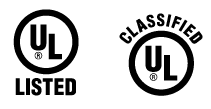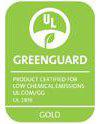
Over 120 Years of Testing Products for Safety
Those of us who grew up in the 20th Century remember seeing the UL tags and labels with the legend, “Tested by Underwriters Laboratories” on almost all new electrical products. We knew the device should be safe if used as recommended.
Workers in plants making electrical and electronic equipment have seen the last mark above on circuit boards and other components. That is the “Registered Component” mark issued by UL.


![]()
History
Underwriters Laboratories (UL) began as Underwriters’ Electrical Bureau (UEB), a service of the National Board of Fire Underwriters (NBFU), a group of fire insurance agencies across the country. It started in 1894 when William H. Merrill, an electrical engineer, was sent from Boston to Chicago to inspect the Palace of Electricity at the Columbian Exposition (the World Fair commemorating the 400th anniversary of Columbus’s discovery of the New World).
Merrill stayed in Chicago and founded the UEB to inspect electric devices and materials for fire safety. The expanding availability and use of electricity, especially lighting, resulted in an increased rate of electrical fires in homes and businesses. For the underwriters, this was risk abatement.
The UEB would not only test electrical equipment, but would set standards for safety and safe use. These standards are the basis of public education by NBFU and the National Fire Prevention Association on electrical fire safety.
Early in the 20th Century, Underwriters’ Electrical Bureau became Underwriters Laboratories (UL). At the beginning of 2012, it became a for-profit company with the name simplified to UL.
Mission
The mission of Underwriters Laboratories is still safety. It has broadened to include all kinds of safety, as well as security and sustainability. From 1906, this mission has included education of the public as well as industrial and commercial businesses. Beginning with fire safety, UL has always been a participant in setting and publishing safety standards.
Extent
UL began with testing and setting standards for electrical equipment and components, then other products related to fire safety. The field of standards and testing has expanded to several areas. Wikipedia lists nine fields of UL standards:
• Sustainability Standards
• Standards for Electrical and Electronic Products
• Life Safety Standards
• Standards for Building Products
• Standards for Industrial Control Equipment
• Standards for Plastic Materials
• Standards for Wire and Cable
• Standards for Canada developed by ULC Standards, a member of the UL family of companies
• Photovoltaic
UL has also expanded geographically. It is now in 104 countries. No matter where in the world an item is made, it can be tested by UL in its country of origin.
Testing Related to Mattresses
Testing by UL includes a number of components of mattresses, beds and bedding. The obvious item is electrical parts of adjustable beds, the traditional UL target. But now that includes testing fabrics, foams, and entire mattress assemblies for flammability. It also includes testing foams, fabrics, and other materials for substances such as toxic chemicals and heavy metals. Not only the materials, but manufacturing processes are evaluated for safety and sustainability and environmental impact. From the UL website, here are a few (these are quotes):
Mechanical Safety & Performance for Mattresses
Mattress Performance Testing from UL is designed to determine how mattresses wear over time so that manufacturers can evaluate long-term performance, comfort and safety. UL can evaluate static loads, and conduct impact and durability testing, all to widely used, internationally recognized testing standards.
UL’s global network of accredited laboratories provides expertise in mattress flammability testing to help manufacturers ensure compliance with regulations. We can help manufacturers in the product development phase, as well as with material changes, failure analysis, comparison testing and claims verification.
Testing Mattresses and Mattress Systems for the U.S. Market
This UL white paper discusses the testing requirements for mattresses and mattress systems intended for sale in the U.S. The paper begins with an overview of the U.S. mattress market and the dynamics that are likely to impact future market growth. The white paper then summarizes the key flammability requirements and testing methods applicable to mattresses sold in the U.S., and addresses special considerations that apply to mattresses intended for use by infants and children.
UL supports mattress and bedding manufacturers with chemicals and emissions testing for mattresses, box spring sets and mattress pads, and electrical and flammability testing to third-party environmental sustainability certifications and claim validations.
The mattress testing for meeting chemical emissions standards is done though GreenGuard certification. GreenGuard Environmental Institute is now part of the UL Environment industrial sector.
From mid-2012 throough 2014, eco-INSTITUT was part of UL.
Conclusion
Many of the major certification agencies started in Europe. Intertek was the merger of British, Canadian and US companies. UL started in the United States, has spread around the globe, and has influenced safety standards across the world.

